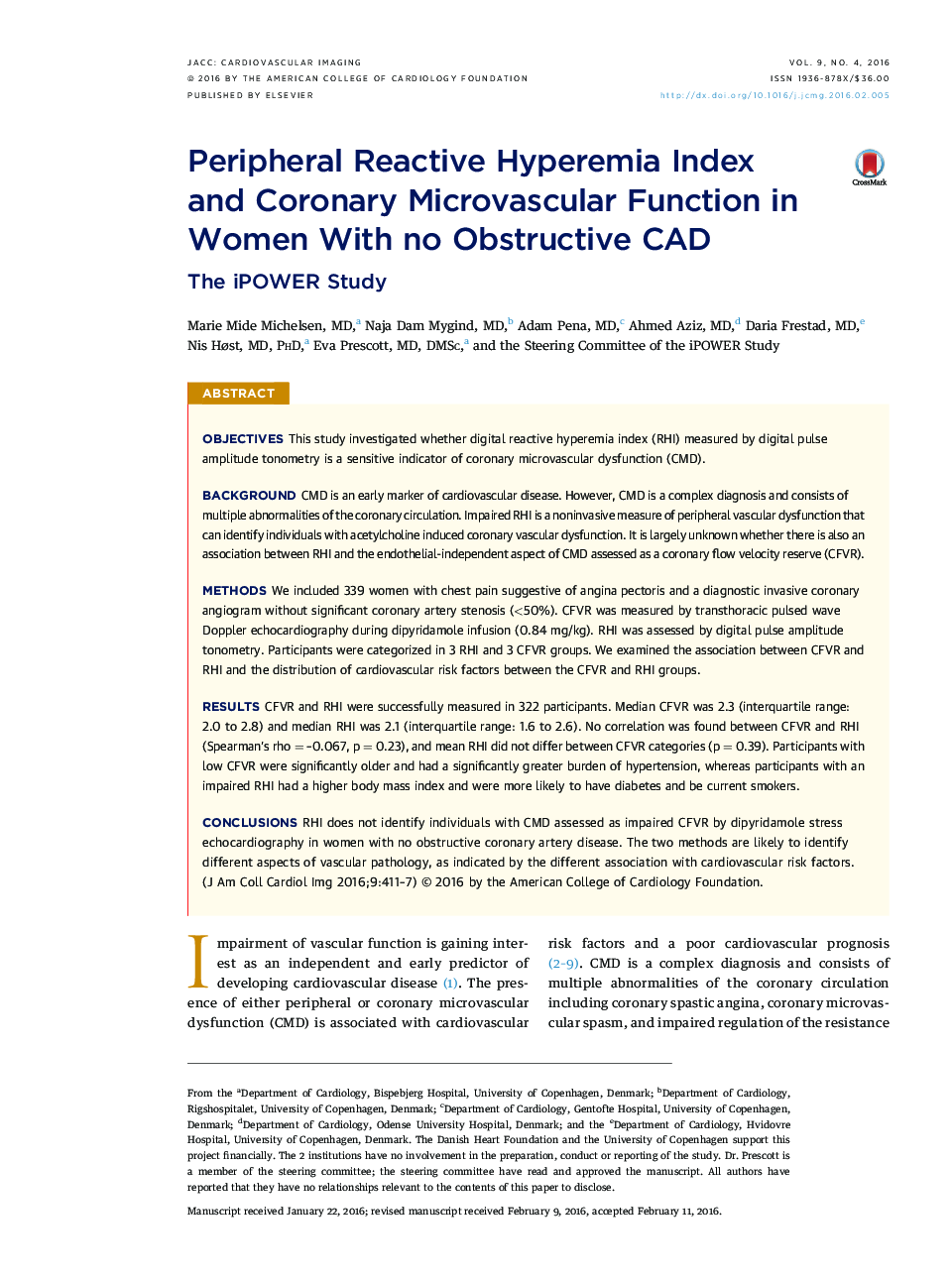| Article ID | Journal | Published Year | Pages | File Type |
|---|---|---|---|---|
| 2937709 | JACC: Cardiovascular Imaging | 2016 | 7 Pages |
ObjectivesThis study investigated whether digital reactive hyperemia index (RHI) measured by digital pulse amplitude tonometry is a sensitive indicator of coronary microvascular dysfunction (CMD).BackgroundCMD is an early marker of cardiovascular disease. However, CMD is a complex diagnosis and consists of multiple abnormalities of the coronary circulation. Impaired RHI is a noninvasive measure of peripheral vascular dysfunction that can identify individuals with acetylcholine induced coronary vascular dysfunction. It is largely unknown whether there is also an association between RHI and the endothelial-independent aspect of CMD assessed as a coronary flow velocity reserve (CFVR).MethodsWe included 339 women with chest pain suggestive of angina pectoris and a diagnostic invasive coronary angiogram without significant coronary artery stenosis (<50%). CFVR was measured by transthoracic pulsed wave Doppler echocardiography during dipyridamole infusion (0.84 mg/kg). RHI was assessed by digital pulse amplitude tonometry. Participants were categorized in 3 RHI and 3 CFVR groups. We examined the association between CFVR and RHI and the distribution of cardiovascular risk factors between the CFVR and RHI groups.ResultsCFVR and RHI were successfully measured in 322 participants. Median CFVR was 2.3 (interquartile range: 2.0 to 2.8) and median RHI was 2.1 (interquartile range: 1.6 to 2.6). No correlation was found between CFVR and RHI (Spearman’s rho = –0.067, p = 0.23), and mean RHI did not differ between CFVR categories (p = 0.39). Participants with low CFVR were significantly older and had a significantly greater burden of hypertension, whereas participants with an impaired RHI had a higher body mass index and were more likely to have diabetes and be current smokers.ConclusionsRHI does not identify individuals with CMD assessed as impaired CFVR by dipyridamole stress echocardiography in women with no obstructive coronary artery disease. The two methods are likely to identify different aspects of vascular pathology, as indicated by the different association with cardiovascular risk factors.
